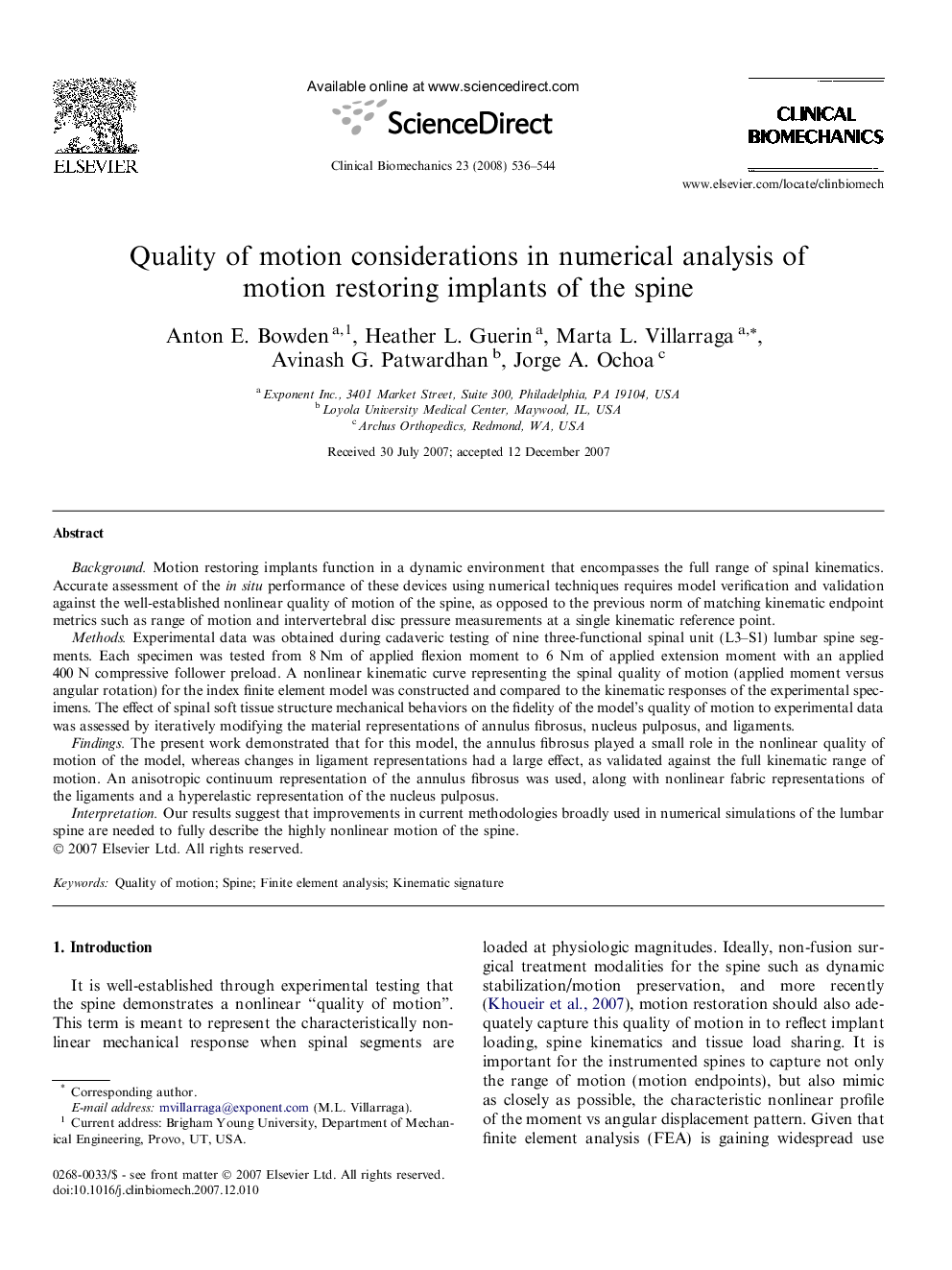| Article ID | Journal | Published Year | Pages | File Type |
|---|---|---|---|---|
| 4051459 | Clinical Biomechanics | 2008 | 9 Pages |
BackgroundMotion restoring implants function in a dynamic environment that encompasses the full range of spinal kinematics. Accurate assessment of the in situ performance of these devices using numerical techniques requires model verification and validation against the well-established nonlinear quality of motion of the spine, as opposed to the previous norm of matching kinematic endpoint metrics such as range of motion and intervertebral disc pressure measurements at a single kinematic reference point.MethodsExperimental data was obtained during cadaveric testing of nine three-functional spinal unit (L3–S1) lumbar spine segments. Each specimen was tested from 8 Nm of applied flexion moment to 6 Nm of applied extension moment with an applied 400 N compressive follower preload. A nonlinear kinematic curve representing the spinal quality of motion (applied moment versus angular rotation) for the index finite element model was constructed and compared to the kinematic responses of the experimental specimens. The effect of spinal soft tissue structure mechanical behaviors on the fidelity of the model’s quality of motion to experimental data was assessed by iteratively modifying the material representations of annulus fibrosus, nucleus pulposus, and ligaments.FindingsThe present work demonstrated that for this model, the annulus fibrosus played a small role in the nonlinear quality of motion of the model, whereas changes in ligament representations had a large effect, as validated against the full kinematic range of motion. An anisotropic continuum representation of the annulus fibrosus was used, along with nonlinear fabric representations of the ligaments and a hyperelastic representation of the nucleus pulposus.InterpretationOur results suggest that improvements in current methodologies broadly used in numerical simulations of the lumbar spine are needed to fully describe the highly nonlinear motion of the spine.
